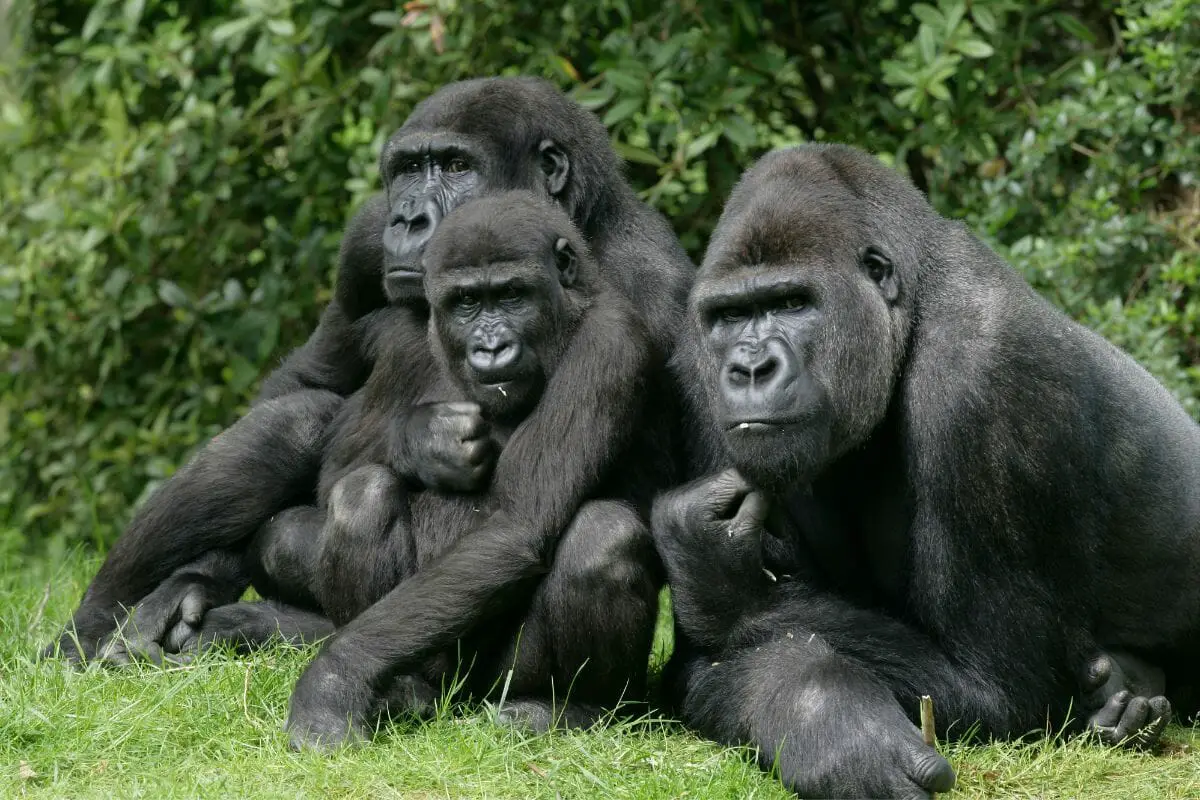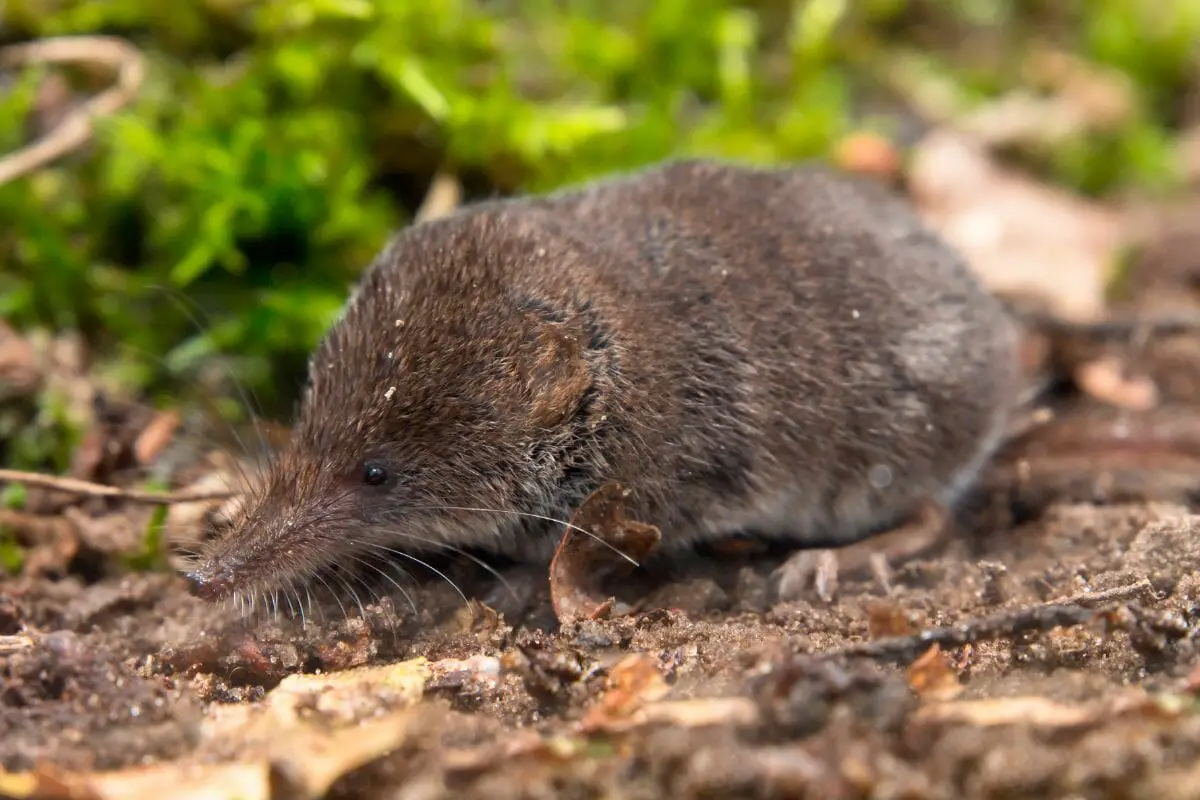When an animal is endangered, it means they are at risk of extinction. This sad reality means that more and more of these animals are dying, or being killed, eventually resulting in specific species no longer existing.

The International Union For Conservation of Nature (IUCN) placed gorillas on the endangered list, which means they are at risk of extinction.
This article will discuss why they are now known as endangered animals, and what you can do to help!
Species Of Gorillas
There are two gorillas species, both known as endangered, These are the western gorilla and the eastern gorilla.
Western gorillas have two subspecies: the lowland, and the Cross River gorillas. The eastern gorillas also have two subspecies known as the eastern lowland and the mountain gorillas.
The more abundant species are the western lowland gorillas, with a population of approximately 300,000. However, this population is declining due to the threats posed to them (which we will discuss later on).
Unfortunately, the other species of western gorillas, the Cross River gorillas, are rarer and in a decline also, with a population of around 250.
Eastern lowland gorillas have experienced a large decline in their population, falling by 77% between 1996 and 2016. Sadly, only 3800 are known to be left living in the wild.
Mountain gorillas are even rarer, and only 1000 are thought to still be alive. However, back in the 1980s, their population was only around 240, but ‘extreme conservation’ was able to increase their numbers to 1069.
Why Are Gorillas Endangered?
All species of gorillas mentioned above are endangered and this is due to the threats they face. However, the kinds of threats they face, and the seriousness of each one does depend on the area in which they live.
The main threats revolve around diseases, poaching, and the destroying of their habitat.

Poaching
Poaching refers to the illegal killing and trafficking of wild animals. Some are sold as pets, and others are used as trophies or ‘folk medicines’.
The capturing and killing of gorillas is illegal, but the illegal bushmeat trade has continued to poach gorillas, affecting their important habitats.
Although these animals are intentionally targeted by poachers, they are often the victims of opportunistic hunters, as well as snares that are meant for other animals.
When it comes to them becoming extinct, poaching is the number one threat to them, and one of these reasons is that logging and mining roads make dense forests a lot more accessible to poachers.
Diseases
The next biggest threat that comes second to poaching, is infectious disease. The Ebola virus is a disease that affected the gorilla population massively. The 1980s saw the worst of it, with mortality rates that were as high as 95%.
Gorillas who lived in protected areas were able to recover within a decade, although full recoveries were thought to take around 75 to 130 years!
However, this full recovery would only take place if all poaching ceased, which was unlikely to happen, according to the IUCN.
Although this disease affected many western lowland gorillas, diseases are a big issue for Cross River, and eastern gorillas also.
Habitat Loss
Habitat loss is a large threat to all apes, gorillas included. However, this will differ depending on the place.
Western lowland gorillas are seriously affected by oil-palm plantations and industrial-scale mining. This is because these constructions displace their habitat, and enable development corridors. These fragment the forests these gorillas live in.
The habitat of Cross River and eastern gorillas is also lost, however, this is mainly due to human construction such as expanding villages, farmland, and pastures.
Sadly, between the years of 1995 and 2010, Cross River gorillas lost over half of their habitat, at around 59%.
How You Can Help
While some of the factors mentioned above are out of our control, there are a few things that we, humans, can do to help.
As humans, we shared a common ancestor around 10 million years ago, and our genetics are still roughly around 98% identical to theirs. However, despite these similarities, there are still a number of reasons why we should help them.
They are a very important part of our ecosystem, as they disperse seeds of fruits they eat around the forests in which they roam. Aside from this, their risk of extinction is largely the fault of human activity, so they deserve a helping hand from us.
Support Gorilla Groups
There are several groups that support gorillas, and these groups provide support to endangered gorillas. You can also support gorilla sanctuaries, where they monitor and care for these magnificent animals.
You can help by donating money, or even volunteering for a period of time with them, where you can experience just how fascinating they are.
Be Responsible When Visiting Mountain Gorillas
Local communities and tourists must be responsible when visiting gorillas in their natural habitat.
All people should stay at least 21 feet away from them at all times, and if they are sick, they should skip all excursions to avoid passing on any disease to wild gorillas.
Recycle Phones
Mining is a large cause of the loss of habitat to gorillas, and a lot of the time, mining is done to find metals to make phones and electronics.
By recycling phones, you can reduce the demand for these metals, which will reduce the amount of mining that needs to be done.
Purchase Sustainable Palm Oil
Palm oil plantations in Africa are seriously affecting the habitat of gorillas. To reduce the demand for palm oil, conservation groups recommend avoiding it, or using products that are certified as sustainable.
Final Thoughts
To conclude, the main reasons why gorillas are endangered are down to poaching, diseases, and lastly, their loss of habitat.
By supporting groups that support gorillas through conservation and other means, you can help protect these lovely animals from extinction.
We hope this article has provided you with a good amount of information on why gorillas are endangered.








